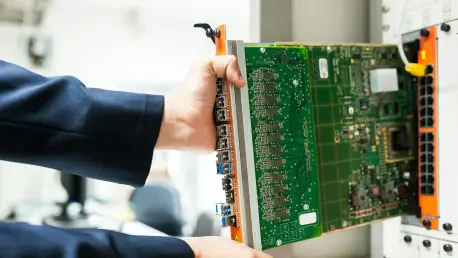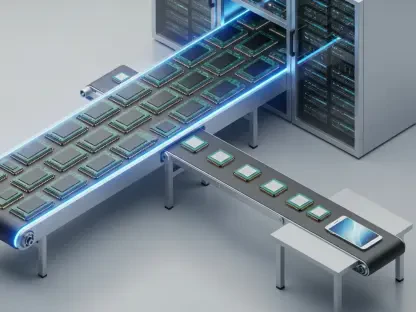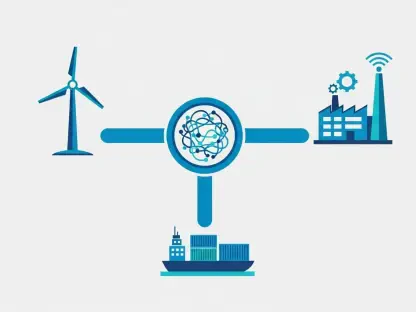As rural America grapples with persistent gaps in high-speed internet access, a monumental opportunity has emerged through the federal Broadband Equity, Access, and Deployment (BEAD) program, which channels billions of dollars into closing the digital divide. This initiative isn’t just about connecting communities today; it’s about building infrastructure that will stand the test of time for generations. The choice of technology at the heart of this effort carries profound implications, shaping not only current connectivity but also the economic and social future of underserved regions. Amidst a landscape of competing broadband solutions, one technology emerges as the clear frontrunner due to its unmatched performance and longevity. This discussion delves into the strategic importance of prioritizing a specific approach to ensure that rural areas aren’t just catching up but are poised to thrive in an increasingly digital world.
The Case for Prioritizing Advanced Broadband Solutions
Unmatched Performance for Rural Connectivity Needs
When considering the technological backbone for rural broadband expansion, the capacity to deliver high-speed, reliable internet stands paramount, especially in areas where digital access can transform education, healthcare, and economic opportunity. Fiber optic technology excels in this arena with its ability to provide symmetrical multi-gigabit speeds, far outpacing alternatives. A single strand of fiber can carry over 300 terabits per second, a bandwidth that ensures consistent performance even during peak usage times. This translates to tangible benefits for rural users, such as seamless video conferencing, rapid data transfers, and uninterrupted streaming. Beyond speed, fiber offers remarkably low latency, a critical factor for real-time applications like telemedicine or remote learning. As rural communities increasingly rely on digital tools, the superior performance of fiber positions it as the ideal choice to meet both current demands and future innovations, ensuring that these areas are not left behind in a fast-evolving technological landscape.
Long-Term Reliability and Scalability Benefits
Another compelling reason to anchor broadband initiatives in fiber optics lies in its exceptional reliability and scalability, attributes that are essential for infrastructure meant to last decades. Unlike other technologies susceptible to weather disruptions or signal degradation over distance, fiber remains steadfast, delivering consistent service regardless of external conditions. This durability is particularly vital in rural settings where maintenance can be challenging and costly. Moreover, fiber’s scalability allows it to support emerging technologies, such as advanced 5G networks and beyond, without requiring significant overhauls. Its infrastructure, designed to endure over 40 years with minimal upkeep, presents a cost-effective solution in the long run, avoiding the recurring expenses tied to less durable systems. By investing in fiber, the BEAD program can ensure that rural communities receive a foundation capable of adapting to technological advancements, securing digital equity for the foreseeable future.
Addressing Limitations of Alternative Technologies
Challenges with Coaxial and Wireless Systems
While various broadband technologies vie for consideration under the BEAD program, alternatives like coaxial cable and fixed wireless access (FWA) reveal significant shortcomings that hinder their suitability for widespread rural deployment. Coaxial systems, often built on aging infrastructure, struggle with signal loss over long distances and remain vulnerable to physical damage, theft, and corrosion, even with modern upgrades. These issues compromise reliability, a critical concern in remote areas where service interruptions can have outsized impacts. Fixed wireless, including mid-band and mmWave 5G, offers a potential interim solution for less dense regions, but its effectiveness is limited by spectrum constraints and sensitivity to physical obstructions like trees or buildings. Such limitations make it an unreliable primary option for comprehensive coverage, underscoring the need for a more robust technology to serve as the backbone of rural connectivity efforts under federal initiatives.
Shortfalls of Satellite-Based Solutions
Satellite services, often heralded as a quick fix for remote areas, also fall short when evaluated for large-scale implementation in rural broadband programs. Despite advancements in this space, these systems grapple with low user capacity per square mile, meaning they cannot support dense usage in even moderately populated rural zones. Speeds frequently fail to meet the BEAD program’s minimum thresholds of 100 Mbps download and 20 Mbps upload, and high monthly costs place an additional burden on users. Furthermore, the short lifespan of satellites and the requirement for a clear line of sight add layers of complexity and unreliability. These challenges render satellite technology more of a niche solution rather than a cornerstone for long-term digital inclusion. In contrast, a more durable and capable infrastructure is necessary to ensure that rural communities receive equitable access to the digital economy without the risk of obsolescence or inconsistent service delivery.
Building a Future-Proof Digital Landscape
Strategic Importance of Sustainable Infrastructure
Reflecting on the efforts to bridge the digital divide, it became evident that the decisions made during the rollout of the BEAD program carried weight far beyond immediate connectivity gains. The emphasis on sustainable infrastructure, particularly through fiber optics, was recognized as a pivotal step in preventing the need for costly upgrades or replacements in the near future. Rural communities, once connected through this robust technology, gained a competitive edge in accessing digital resources that were previously out of reach. This strategic focus not only addressed current disparities but also laid a foundation resilient enough to support technological leaps over the coming decades. The consensus among experts was that prioritizing longevity and performance over short-term fixes was the most prudent path to achieving lasting digital equity in underserved regions.
Moving Forward with Targeted Investments
Looking back, the push for targeted investments in fiber optics under the BEAD framework was seen as a defining moment in shaping rural America’s digital trajectory. The next steps involved meticulous planning to ensure that funds were allocated where fiber deployment was feasible, complemented by alternative solutions only in the most inaccessible areas. Policymakers and stakeholders were urged to collaborate closely with local communities to map out priority zones, maximizing the impact of every dollar spent. Additionally, ongoing evaluation of technological advancements was deemed essential to adapt strategies as needed, ensuring that rural broadband remained at the forefront of innovation. This forward-thinking approach, rooted in the lessons of past initiatives, aimed to solidify a network capable of empowering generations, transforming rural landscapes into hubs of digital opportunity and growth.









